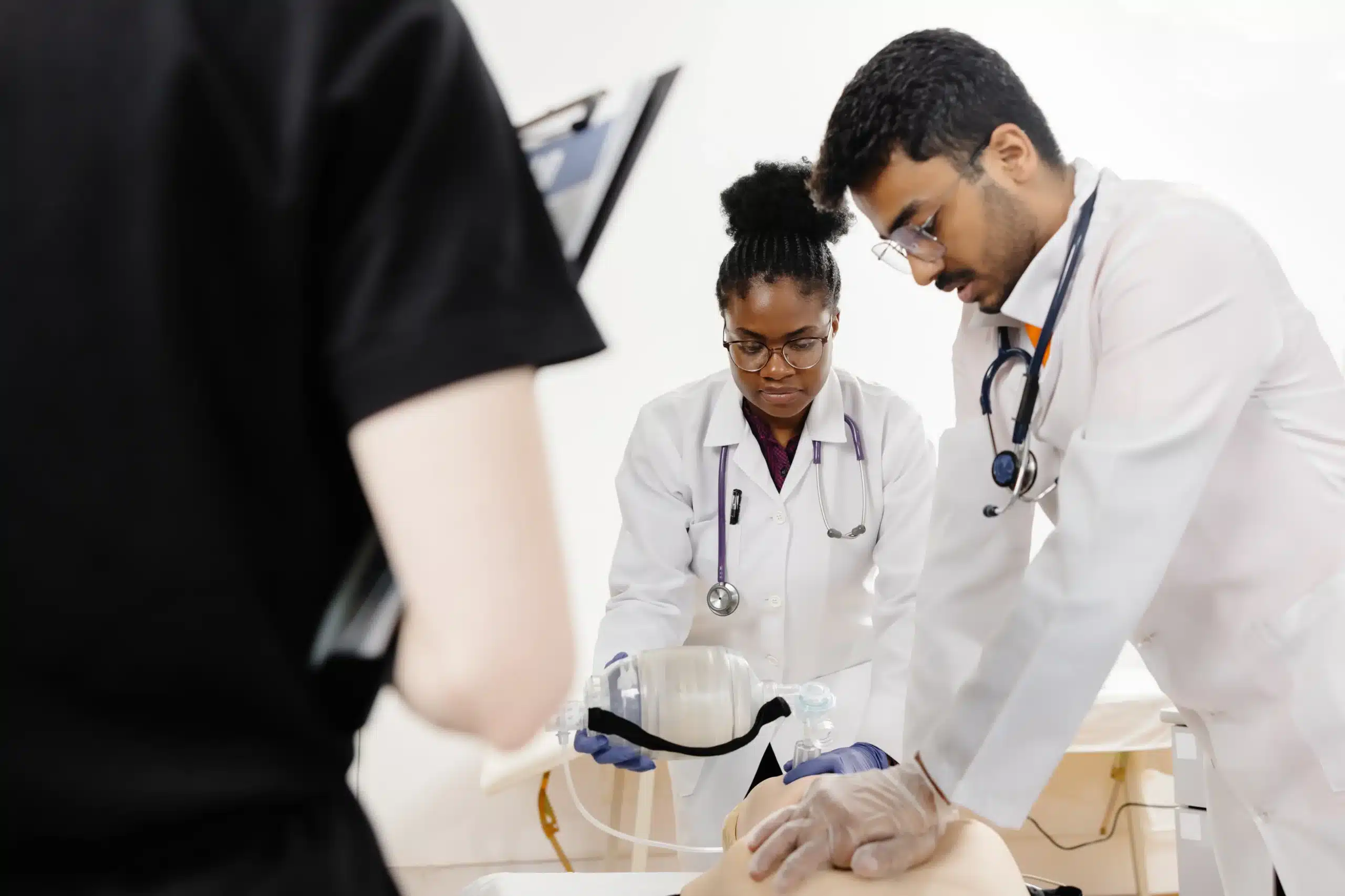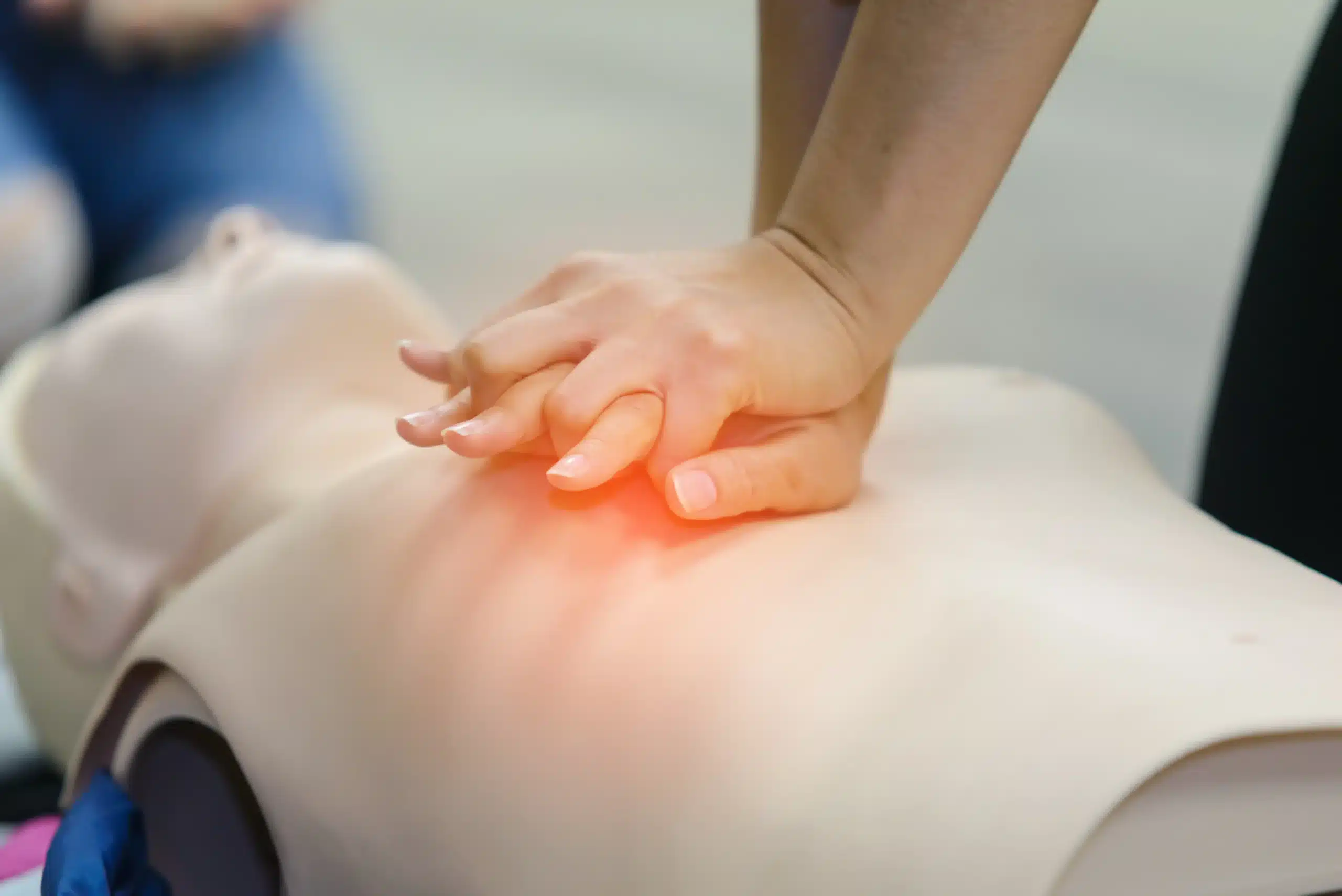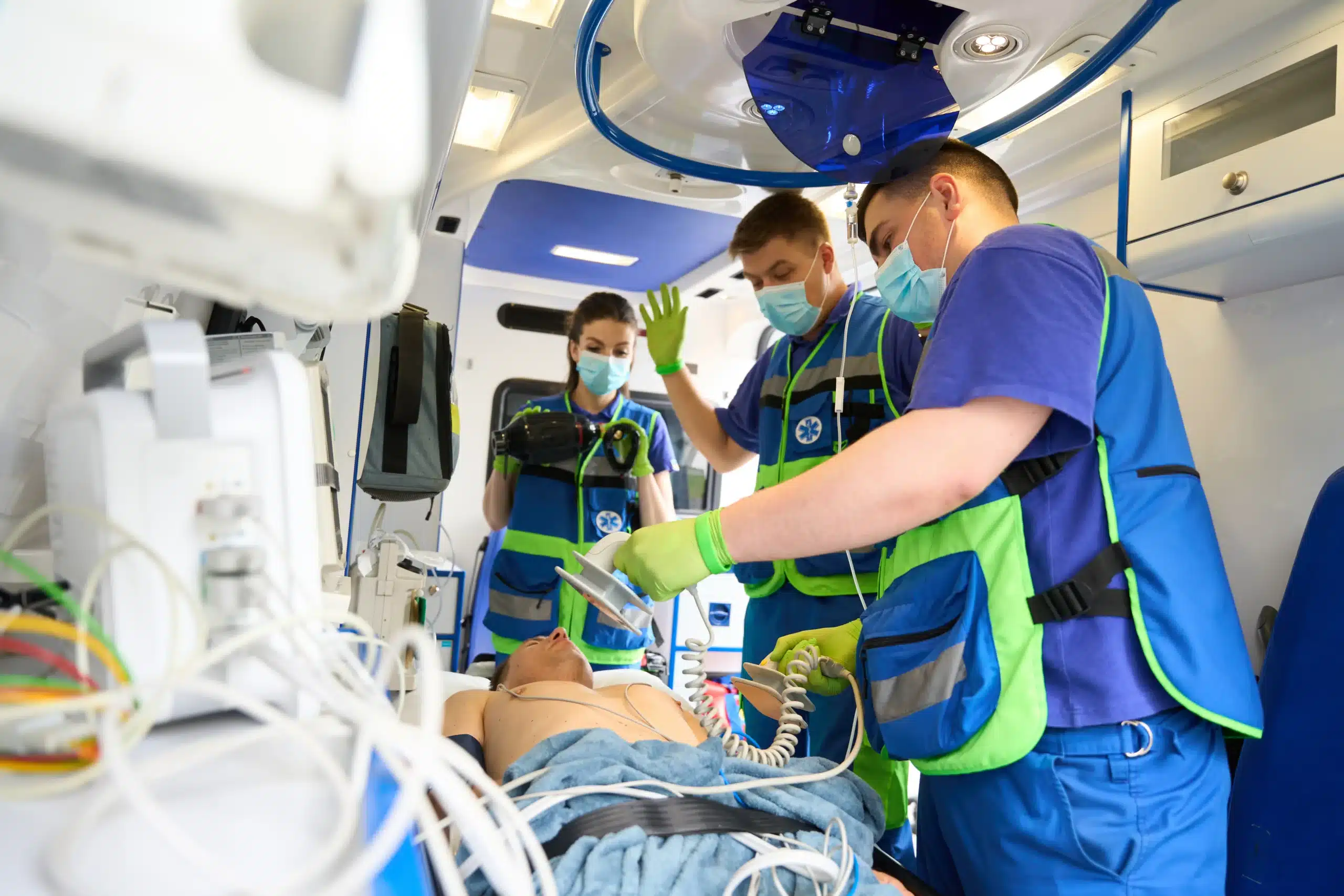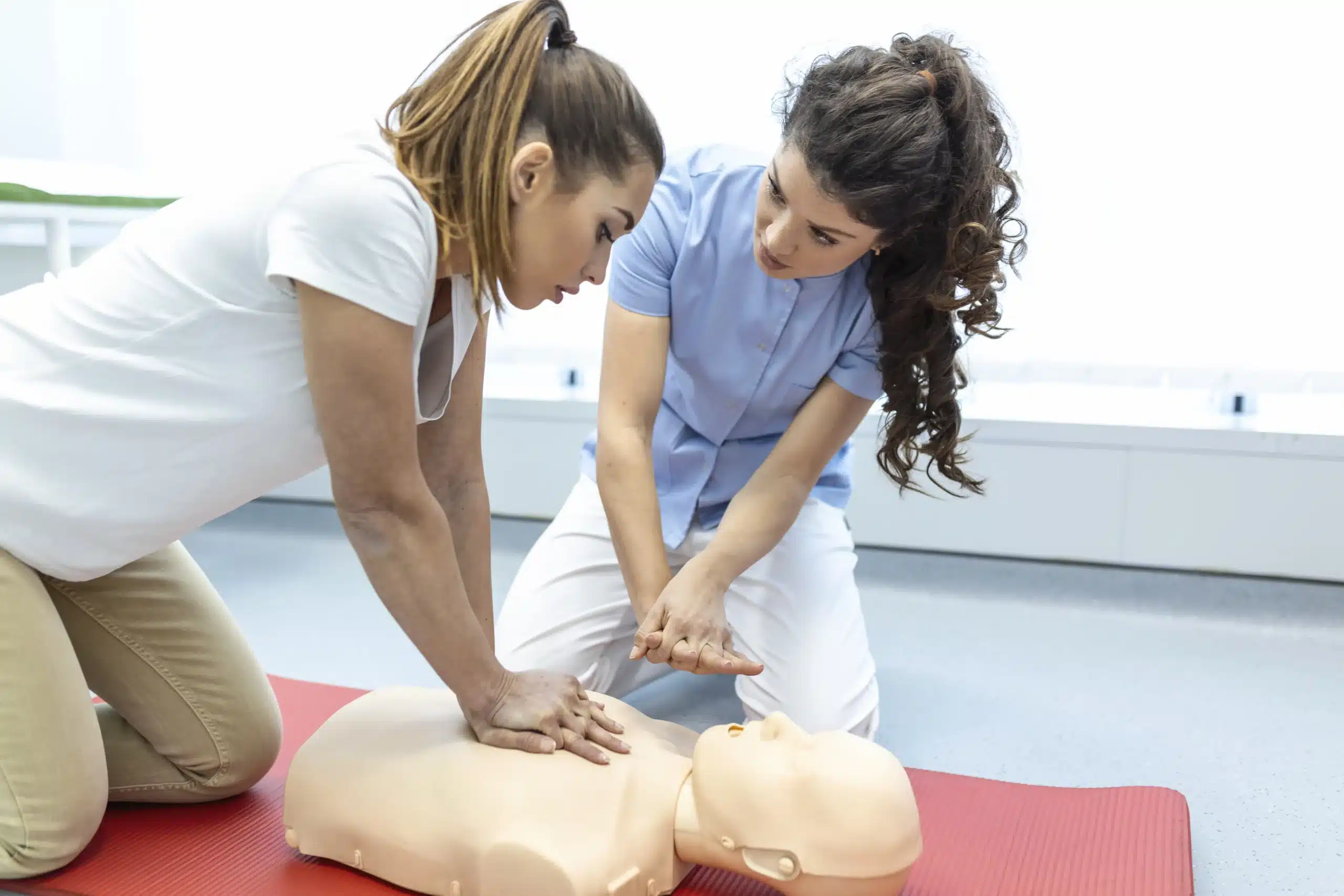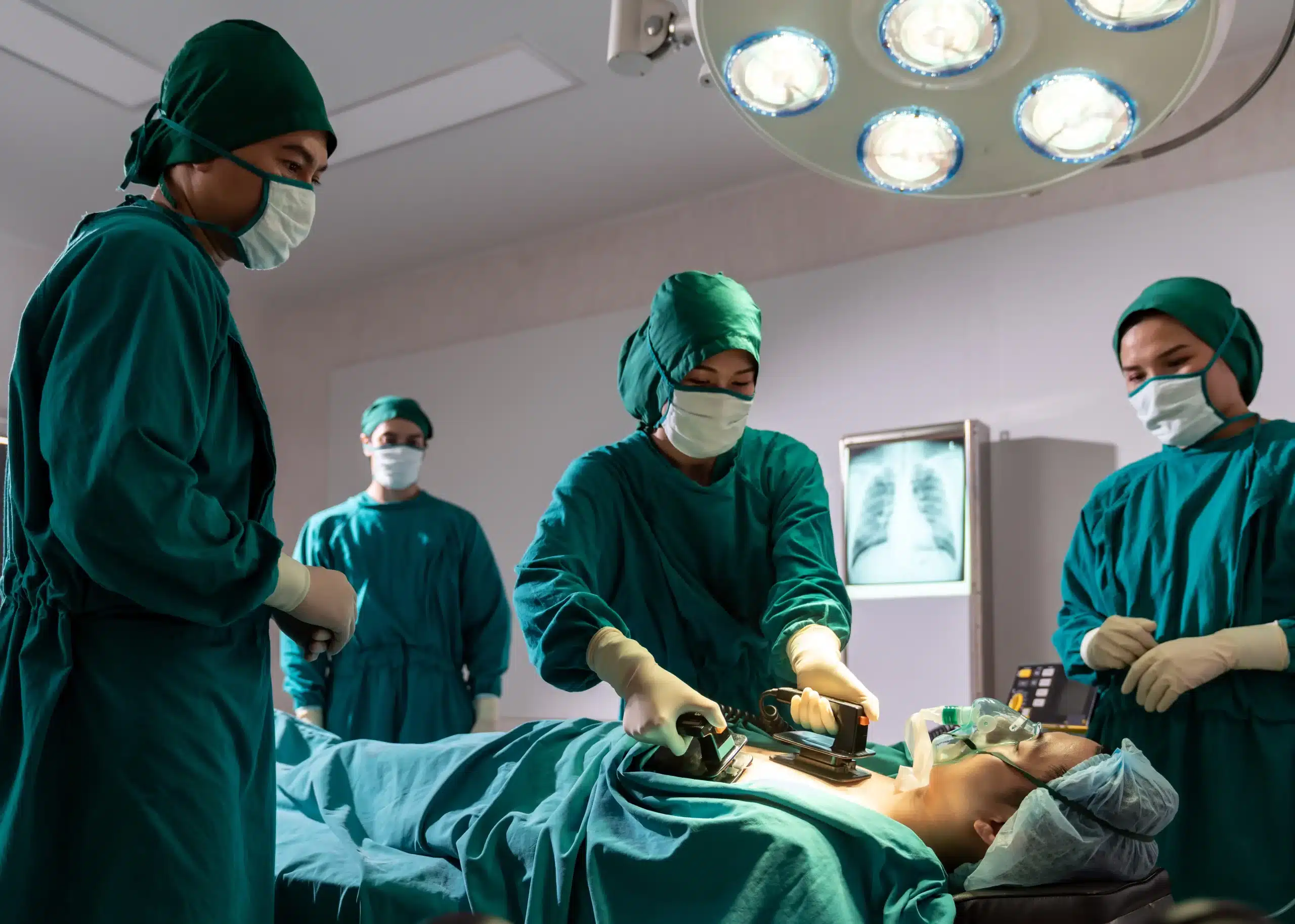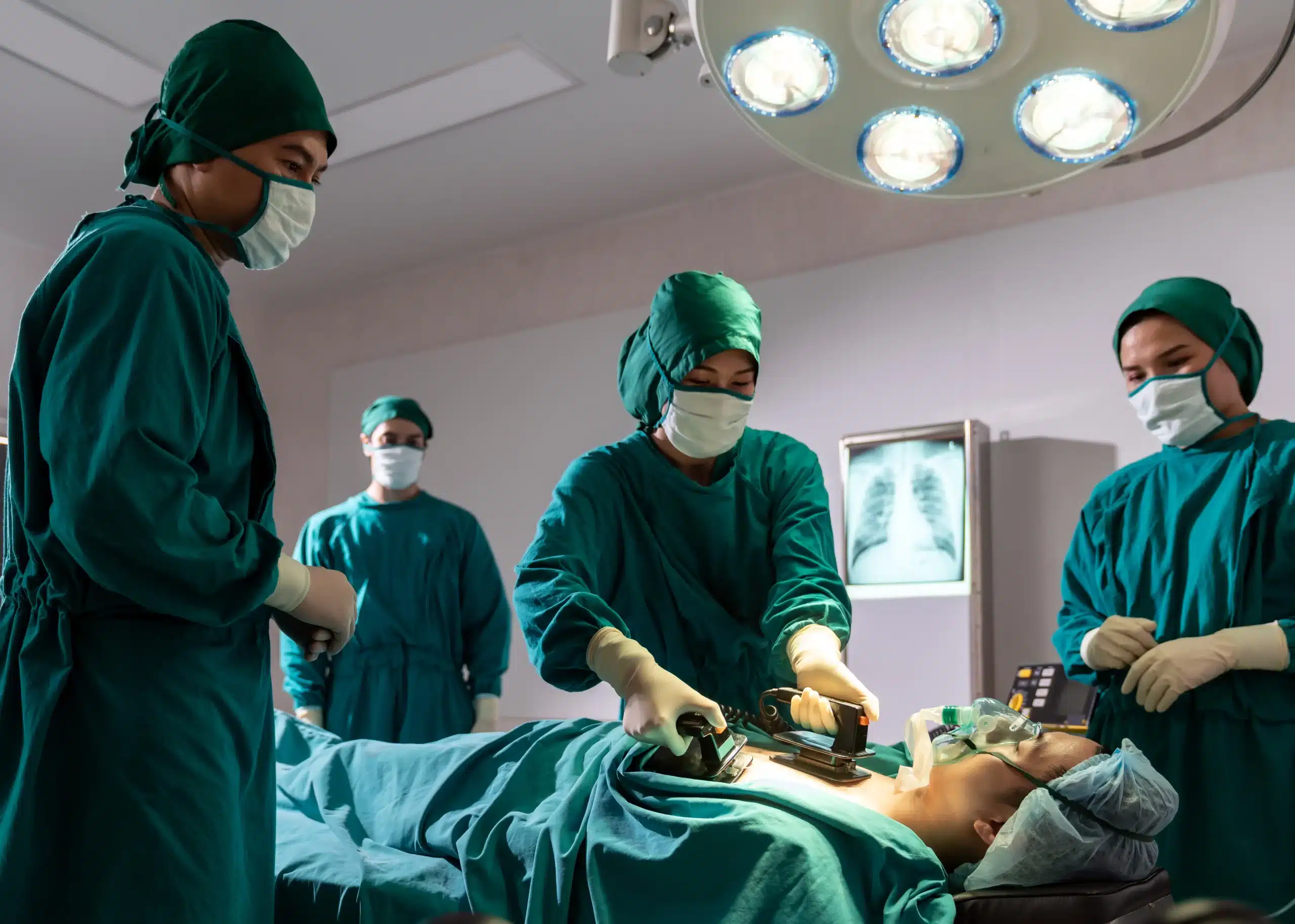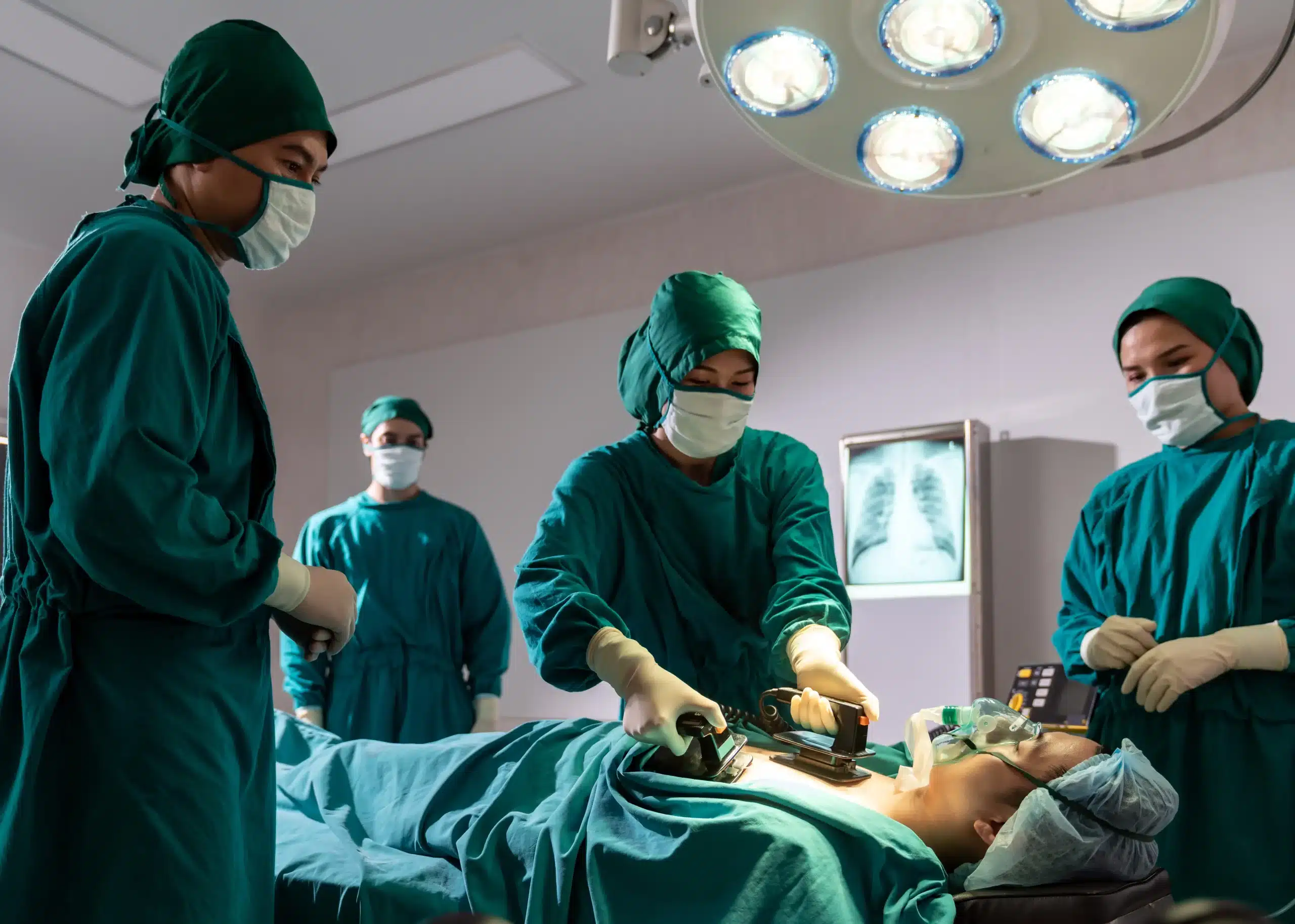Emergencies can happen anytime, anywhere. Being equipped to handle these situations is a powerful skill. Basic Life Support (BLS) certification provides the knowledge and training to respond effectively in medical crises, delivering crucial care until professional help arrives. This article breaks down everything you need to know about BLS certification, from the skills you’ll learn to the different training options available. We’ll discuss the importance of BLS for various professions, the steps involved in getting certified, and how to find “BLS certification near me.” Whether you’re a healthcare worker, a caregiver, or simply someone who wants to be prepared, this guide will help you understand the value of BLS certification.
Key Takeaways
- BLS certification is more than a credential: It signifies your readiness to provide crucial care during emergencies. High-quality CPR and quick intervention are key components of BLS training, empowering you to make a real difference.
- Finding the right BLS course fits your needs: Consider your learning style and schedule when choosing between in-person, online, or blended learning formats. Research local training centers, use online search tools, and don’t hesitate to ask about discounts.
- Maintaining your BLS skills is essential: Regularly renewing your certification ensures you’re always prepared and confident in your abilities. Stay up-to-date on the latest guidelines and best practices in emergency care.
What is BLS Certification & Why is it Important?
Basic Life Support (BLS) certification equips you with the skills to respond to life-threatening emergencies. It’s more than just a credential; it signifies your readiness to provide critical care in those crucial first few minutes. While often associated with healthcare professionals, BLS certification is valuable for anyone who wants to be prepared for an emergency. It emphasizes early intervention and high-quality CPR, increasing the chances of survival for victims of cardiac arrest, respiratory distress, or choking. Think of it as a powerful tool, empowering you to make a real difference. BLS certification demonstrates your commitment to safety and preparedness, whether you’re a medical professional or not. It’s about having the confidence and skills to act quickly and effectively when every second counts. For a deeper understanding, read more about common myths about BLS certification.
BLS Training: What Skills Will You Learn?
BLS training provides a comprehensive skill set to handle various emergency situations. You’ll learn how to perform high-quality CPR for adults, children, and infants—a cornerstone of BLS. The training also covers using an automated external defibrillator (AED), a device that can restore a normal heart rhythm. You’ll also gain proficiency in basic airway management techniques, including relieving choking and ensuring adequate ventilation. These skills are crucial for maintaining oxygen flow until professional medical help arrives. Learn more about best practices for BLS training. The goal is to stabilize the patient and buy valuable time until paramedics arrive. BLS training empowers you to take decisive action and provide immediate care, potentially saving a life. The American Heart Association emphasizes the importance of an in-person skills assessment for their BLS certification, ensuring you’re fully prepared. Find BLS training near me to learn more.
Who Needs BLS Certification?
While BLS certification is often a requirement for healthcare providers, its importance extends beyond the medical field. Anyone can benefit from having these lifesaving skills. Emergencies can happen anytime, anywhere. From parents and caregivers to teachers, coaches, and even office workers, BLS training equips individuals in all walks of life to respond effectively. This article discusses common misconceptions about who needs BLS training. Knowing how to perform CPR and use an AED can dramatically improve outcomes in emergencies. For healthcare providers, BLS certification is especially critical, directly impacting patient outcomes during critical situations. It’s not just about checking a box; it’s about being prepared to save a life.
Find BLS Certification Courses Near You
So, you’re ready to get your BLS certification—now what? Finding the right course can feel overwhelming, but it doesn’t have to be. Let’s break down how to find BLS training near you.
Local Training Centers
Start by searching for local training centers. Community colleges, hospitals, and dedicated CPR training facilities often offer BLS certification courses. Think about what’s important to you: convenient location, weekend availability, or a specific price point? Considering factors like cost, schedule, and the training center’s reputation will help you choose training that best fits your needs.
Online Search Tools
Broaden your search by using online tools. Many websites offer search features to locate accredited BLS courses in your area. Hospitals and clinics often list their courses online, making it easy to find a class that works for you.
San Rafael CPR Classes
If you’re in the San Rafael, Corte Madera, or Fairfax area, San Rafael CPR Classes offers a variety of CPR and safety training courses, including BLS certification. Their RQI program, designed for healthcare professionals, provides a streamlined path to Heartsaver BLS certification through the American Heart Association. Check out their low price guarantee. They even have a handy Northern California CPR directory to help you find other training resources.
Choose the Right BLS Training Format
Finding the right BLS training format depends on your learning style and schedule. Let’s break down the most common options: in-person, online, and blended learning. San Rafael CPR Classes offers various formats to fit your needs.
In-Person Classes: Hands-On Learning
In-person BLS training gives you essential hands-on experience, working directly with an instructor and other students. You’ll practice skills in real-time, making this format ideal if you thrive in a classroom setting and learn best through direct interaction. The Red Cross estimates in-person BLS training takes about 4.5 hours. Check out our BLS certification course for more details.
Online Courses: Flexibility and Convenience
If your schedule is packed, online BLS courses offer flexibility. Learn at your own pace, fitting the training around your commitments. Online courses often use interactive modules, letting you move through the material at your speed. This self-directed approach works well for independent learners.
Blended Learning
Blended learning combines online flexibility with in-person practice. You’ll complete coursework online, then attend an in-person skills session. The Red Cross offers this format, balancing convenience with hands-on instruction. See our RQI classes for a blended learning option.
What to Expect from the BLS Certification Process
Getting BLS certified is a straightforward process. Here’s what you can expect:
Course Duration and Content
BLS certification courses typically take about 4.5 hours to complete. During this time, you’ll cover essential life-saving skills, including CPR, using an AED, and important problem-solving and teamwork techniques for emergency situations. The BLS course provides healthcare professionals and first responders with the training they need to handle life-threatening emergencies.
Exam Requirements
BLS certifications are valid for two years. You’ll need to renew your certification before it expires. Renewal courses are readily available. The certification process involves both a written exam and a practical skills test to make sure you’re fully prepared to respond effectively in real-life emergencies.
Hands-On Skills Assessment
The BLS certification process includes a hands-on skills assessment to evaluate your practical abilities. This in-person assessment is essential for demonstrating that you can apply the skills learned during the course. This practical test ensures you can confidently perform life-saving procedures. Organizations like the American Heart Association require an in-person skills assessment as part of their BLS certification process.
BLS Certification: Cost vs. Value
Getting BLS certified is an investment in your skills and ability to respond to medical emergencies. But how much does it cost, and what factors influence the price? Let’s break down the expenses associated with BLS certification and explore why it’s a worthwhile investment.
Average Price Range
You can typically expect BLS certification courses to range from $70 to $100. This price usually covers the course materials, instruction, and certification fees. Some providers offer a combined CPR/First Aid course for around $85, while others price BLS certification around $95 for initial training and $65 for recertification. It’s always a good idea to check with various providers for their most up-to-date pricing. San Rafael CPR Classes offers a low price guarantee, ensuring you receive quality training at a competitive rate.
Factors Affecting Cost
Several factors can influence the cost of your BLS certification. Location plays a role, as courses in larger cities might be slightly more expensive. The course format also matters—in-person classes sometimes cost a bit more due to facility and equipment expenses. The provider’s reputation and the depth of their training can also affect pricing. For example, a course that includes extensive hands-on practice and personalized feedback might have a higher price tag but offer greater value. Consider factors like location, cost, schedule, and the provider’s reputation when selecting a BLS course. Effective BLS training goes beyond lectures and demonstrations; hands-on practice with feedback is essential for developing the skills and confidence to respond effectively in real-life situations. Check out resources like Morgan Hill CPR Classes for more insights into effective BLS training practices.
Discounts and Promotions
Many training centers offer discounts and promotions that can make BLS certification more affordable. Look for group rates, especially if you’re signing up with colleagues or friends. Some providers also bundle BLS training with other courses like ACLS, PALS, and First-aid, offering a discounted package price. Keep an eye out for seasonal promotions or early bird discounts, too. Asking potential providers about available discounts is always recommended. For example, Safety Training Seminars prioritizes excellent customer service and offers various courses with a low price guarantee.
Choose a Reputable BLS Provider
Finding the right BLS training provider is just as important as the certification itself. It impacts the quality of your education and how prepared you’ll feel in a real emergency. Here’s what to consider:
Accreditation and Recognition
Look for a training provider accredited by a nationally recognized organization. This ensures the course meets established standards and covers essential material. For example, San Rafael CPR Classes offers American Heart Association courses, known for their comprehensive approach. Choosing an accredited program adds credibility to your certification and shows potential employers you’ve received high-quality training. When researching courses, check if they align with your specific professional requirements.
Instructor Qualifications
Experienced, certified instructors make all the difference. They can offer personalized guidance and create a supportive learning environment. Surefire CPR emphasizes the importance of instructor-participant communication, including feedback and opportunities for improvement. Ask about the instructors’ backgrounds and experience. A good instructor will be passionate about teaching and dedicated to student success. They should also be able to answer your questions thoroughly and provide real-world examples.
Course Materials and Resources
High-quality course materials are essential for effective learning. CPR Certification Lookup highlights this, emphasizing how good materials contribute to a successful BLS certification. Ask about the resources included in the course, such as manuals, videos, and practice equipment. Up-to-date materials reflecting current guidelines are crucial. Access to online resources and practice tests can reinforce what you learn in class. A reputable provider will invest in comprehensive, current resources to support your learning.
Renew Your BLS Certification
Keeping your BLS certification current is essential for any healthcare professional. It ensures you’re always prepared to provide high-quality care in emergencies. This section covers everything you need to know about renewing your BLS certification.
Validity Period and Renewal Process
BLS certification is typically valid for two years. After this period, you’ll need to take a renewal course to maintain your credentials. These courses are offered both online and in-person, allowing you to choose the format that best fits your schedule and learning style. Check with your certifying organization, such as the American Heart Association or the American Red Cross, for specific renewal guidelines. They often provide online resources and tools to help you track your certification expiration date and find renewal courses near you. At San Rafael CPR Classes, we offer a variety of BLS Contact us today to learn more.
Continuing Education Requirements
BLS certification training covers essential life-saving techniques, including using automated external defibrillators (AEDs), basic airway management, and techniques for assisting someone who is choking. Renewal courses reinforce these skills and introduce any updated guidelines or protocols. This ensures you’re always equipped with the most current knowledge and best practices in emergency care. Staying informed about changes in CPR techniques and emergency procedures is crucial for providing effective care. Our instructors at San Rafael CPR Classes stay up-to-date on the latest guidelines to ensure you receive the most relevant training.
Why Keep Your Skills Up-to-Date?
Staying current with your BLS certification isn’t just about meeting requirements—it’s about maintaining your confidence and competence in critical situations. Regularly reviewing and practicing these skills ensures you can respond quickly and effectively in an emergency. Up-to-date BLS training empowers healthcare providers to handle crises with confidence and provide the best possible care. It also demonstrates your commitment to professional development and patient safety. By prioritizing your BLS renewal, you contribute to a safer environment for everyone. Consider joining our RQI program for a quick and efficient way to renew your BLS certification.
Prepare for Your BLS Course
Getting ready for your BLS course can make a big difference in how well you absorb the information and master the skills. A little prep work upfront will set you up for success.
Study Materials and Pre-Course Requirements
BLS certification courses, like those offered by San Rafael CPR Classes, typically follow American Heart Association guidelines. These guidelines are designed for healthcare providers and involve more advanced skills than general CPR training. Before your course, check if your training center provides materials beforehand. Reviewing this content ahead of time can significantly improve your understanding and retention of the skills taught during the course.
Effective Learning Strategies
When it comes to learning BLS, active participation and open communication are key. Look for a training program that encourages interaction between the instructor and students, including feedback on your performance. This type of environment, where you can ask questions and get personalized guidance, can be incredibly helpful. To stay sharp and up-to-date with the latest guidelines and techniques, consider using online resources and practicing your skills regularly. Even after you’ve completed your certification, continued practice is essential for maintaining proficiency. Remember, consistent practice is the best way to build confidence and ensure you’re always prepared to respond effectively in an emergency.
BLS Certification: Debunking the Myths
Let’s clear up some common misconceptions about BLS certification. These myths can prevent people from getting this life-saving training.
Time Commitment Myths
One persistent myth is that BLS certification requires a huge time commitment. People often think it will take weeks or months, deterring busy professionals from even considering it. In reality, BLS certification courses can be completed in a single day. Our BLS certification courses are designed to be efficient and convenient, fitting into even the busiest schedules.
Who Really Needs BLS?
Some believe that only doctors and nurses need BLS training. This isn’t true. BLS is valuable for a wide range of professionals, including teachers, coaches, and personal trainers. BLS certification equips you with the skills to handle emergencies like choking or cardiac arrest, using techniques like CPR and AEDs. These skills can make a real difference in any setting. Our BLS classes cover these essential life-saving techniques.
BLS vs. Other Life Support Certifications
There’s sometimes confusion about how BLS certification differs from other training, such as CPR and First Aid. While related, they aren’t interchangeable. BLS certification is specifically designed for healthcare providers and includes more advanced life support skills. It goes beyond basic CPR to cover a broader range of medical emergencies. Our BLS classes in San Rafael provide a comprehensive curriculum that meets these higher standards. We also offer additional certifications, including First Aid training.
Top BLS Certification Providers
Finding the right BLS certification provider is key to receiving high-quality training. Here are some of the leading organizations offering BLS certification courses:
American Heart Association
The American Heart Association (AHA) offers widely recognized BLS training programs focused on improving outcomes from cardiac arrest. Their courses adhere to the latest guidelines in emergency cardiovascular care, making them a trusted choice for healthcare professionals. The AHA emphasizes essential skills and strategies, giving you the confidence to act quickly and effectively during a crisis.
American Red Cross
The American Red Cross provides various BLS certification and renewal courses for both healthcare providers and the general public. They equip participants with the skills to respond effectively in emergencies, covering everything from CPR to using an AED. The Red Cross is a well-established organization with a long history of providing reliable safety training.
National Safety Council
The National Safety Council offers a range of training programs, including BLS certification. Their courses focus on essential emergency response skills, enhancing preparedness in various professional settings. The NSC is a trusted source for safety information and training, making them a solid option for BLS certification.
American Safety & Health Institute
The American Safety & Health Institute (ASHI) provides BLS certification courses that meet the latest guidelines and emphasize practical skills. Their programs cater to both healthcare professionals and the general public, ensuring everyone can access quality training. ASHI’s focus on practical application makes their courses valuable for real-world scenarios.
ProTrainings
ProTrainings offers flexible online and blended learning courses for BLS certification, accommodating various learning styles and schedules. Their programs ensure participants gain the necessary skills to respond effectively in emergencies, offering a convenient way to get certified. ProTrainings’ adaptable format makes it easier to fit BLS training into your busy life.
Related Articles
- BLS Courses in Corte Madera: Your Certification Guide – San Rafael CPR Classes
- BLS Certification in Fairfax: The Complete Guide – San Rafael CPR Classes
- BLS Classes in San Rafael: Your Guide – San Rafael CPR Classes
- BLS Recertification Near Me: A Complete Guide – San Rafael CPR Classes
- BLS Classes in Fairfax: Your Complete Guide – San Rafael CPR Classes
Frequently Asked Questions
Is BLS certification the same as CPR certification?
BLS certification builds upon basic CPR skills. It includes CPR but also covers a broader range of topics like AED use, airway management, and team dynamics during emergencies. It’s designed for healthcare providers and those in specialized roles, requiring a deeper understanding of life support techniques. CPR certification, on the other hand, focuses primarily on CPR skills for various situations.
How long does BLS certification last, and how do I renew it?
BLS certification is typically valid for two years. Renewal involves taking a refresher course that covers the latest guidelines and reinforces essential skills. Check with your certifying organization (like the American Heart Association or American Red Cross) for specific renewal requirements and available courses.
What if I don’t work in healthcare? Do I still need BLS certification?
While BLS is often associated with healthcare, anyone can benefit from this training. Knowing how to respond to emergencies like choking or cardiac arrest can be invaluable in any setting. BLS equips you with the skills and confidence to act quickly and potentially save a life, whether at home, at work, or out in the community.
How can I find BLS classes near me?
Several resources can help you find BLS classes in your area. Online search tools, local training centers (like community colleges and hospitals), and websites specializing in CPR training often list available courses. You can also check with organizations like the American Heart Association and American Red Cross for certified training centers near you.
What should I expect during a BLS course?
BLS courses typically involve a combination of classroom instruction, demonstrations, and hands-on practice. You’ll learn essential skills like CPR, AED use, and airway management. Expect to actively participate in scenarios and simulations to build your confidence and proficiency in responding to emergencies. Most courses also include a written exam and a practical skills test to assess your understanding and ability to apply the techniques learned.
